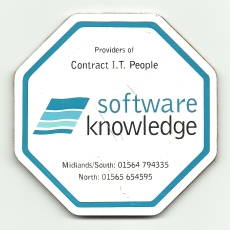
5 Ways to leave a trail of happy clients
I like my business development to be like my food: simple but tasty. Let’s see if this little lot tickles your BD taste buds like it does mine.
1. Always do what’s best for the client.
Short term gain, long term loss or short term loss and long term gain? Your call of course but personally I always aim for the latter.
If you’re in sales and people have a need it’s not too hard to get them to take your option and if that’s the right thing for them to do well fine but if it isn’t say so and move on.
Only a few days ago I was speaking to somebody who I wanted to come on my Business Growth Programme but when she outlined what else she was doing in her business it was obvious to me that taking on the overhaul and upgrade of her BD capability would have been too much and I told her so. Lost the deal but hopefully gained another layer of trust.
2. Be great at what you do.
An obvious thing to say but not one that always translates easily into reality. Too many of us settle for “getting by” especially when we have all sorts of time/money/people/project pressures dragging us down. Occasionally all of us (definitely me included) succumb to this and do second best work.
A tick-box “that’s done let’s move on to the next” mentality does not create delighted clients. The question to ask is “If I were the client would I be thrilled with what I just did for me?” – if the answer is no you know what to do next.
3. Always make your clients feel good.
Never belittle them, bamboozle them with jargon, say you’ll do something and then don’t, make them feel out of control, overload them with things you can do instead and finally never under any circumstances go back on a verbal promise you made.
I can almost imagine you reading this and shaking your heads in disgust at the very thought that you would do those things. The truth is we all do them from time to time it’s just that we’re usually too busy to notice.
A study in America found that most referrals were given by people who had enjoyed the experience of dealing with the supplier; the quality of the outcome was important but of secondary value!
4. Keep them informed at all times even when it’s bad news.
I was trained in the recruitment industry of the late 80s which was a different world to the one we live in today but one thing that has remained the same is that people do not like to be the bearer of bad news. An understandable but flawed belief.
Whether you have good news or bad news people like to know what’s happening and if you don’t tell them they’ll fill the void themselves and probably not in a good way. Much better to drop the odd email over to reassure your clients things are still on track or make that phone call/visit if things are not. The sooner you do this; take the heat and then come up with a plan the better.
Avoid the blame game altogether: if a problem arises quantify it; think of some options; engage the client; agree a way forward and then deal with it. Blame and excuses can wait (forever if I had my way).
5. Check they’re still OK when the dust has settled.
This is a really simple thing to do. Between 6 and 8 weeks after you have completed the work/transaction re-establish contact to see if everything is as it should be.
If the deal was a big one give them a call; smaller deals would warrant a letter (signed in ink by you) and smaller deals should be dealt with through email or social media. The outcome is the same: the client feels you care about them and hey, if there are any issues you can dive in and sort them out winning you even more client brownie points.
So there you have it. 5 ways to create a trail of happy clients none of which need special training or are expensive to do and yet the result……. well, why don’t you try them and find out.














